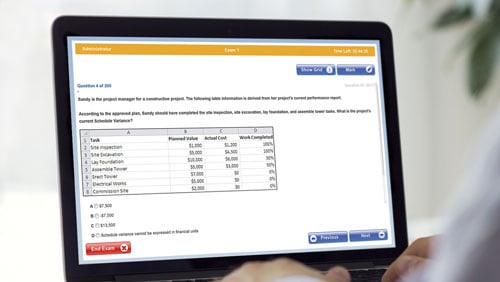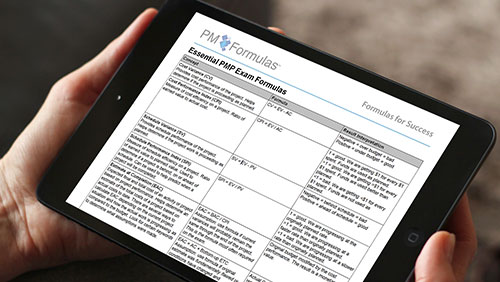Find the Best Answers in the PMP Exam to Become PMP Certified
 Quite often, project management is not totally black and white. A project manager can respond in various ways to events and situations as they arise over the course of a project. This means that when you have a personality conflict between two members on your team you have to decide how to handle that with the individuals and you have to decide how to handle that with the team. Do you deal with it head-on or would it be better to come up with a team-building exercise that may help your team to overcome the situation? Decisions like these are yours to make and since the dynamics of teams and each situation is unique you have to decide which one makes the most sense.
Quite often, project management is not totally black and white. A project manager can respond in various ways to events and situations as they arise over the course of a project. This means that when you have a personality conflict between two members on your team you have to decide how to handle that with the individuals and you have to decide how to handle that with the team. Do you deal with it head-on or would it be better to come up with a team-building exercise that may help your team to overcome the situation? Decisions like these are yours to make and since the dynamics of teams and each situation is unique you have to decide which one makes the most sense.
Sample Project Management Professional (PMP)® Exams mirror this situation. Quite often you will see a question with at least two right answers. With one valuable point towards your PMP® certification on the line, you must select the best one. Let me repeat that: you must select the BEST one. Sometimes none of the answers may be 100% correct but one of them will be BETTER than the others if you’re analyzing them correctly.
- 1. Concept: The Guide is always right
- 2. Concept: A Project Manager is proactive
- 3. Technique: Read the PMP exam question completely first
- 4. Technique: Use your brain to answer the PMP exam questions
- 5. Technique: Start bottom up for long PMP exam questions
- 6. Technique: Read Last sentence first when answering a long PMP exam question
There is of course, no single, correct approach to analyzing the questions but there are several concepts and techniques that you should know.
Concept: The Guide is always right
The Project Management Institute (PMI)® strives to improve project management environments in such a way that in the future all projects will always be executed in the most ideal circumstances. This is the way A Guide to the Project Management Body of Knowledge (PMBOK® Guide) has been written and it is also the basis for which to answer the questions. Answer them from the perspective of the PMBOK® Guide, not from your own experiences. When in doubt, the PMBOK® Guide wins.
Concept: A Project Manager is proactive
As a project manager you should never let a small problem linger to ensure it doesn’t become a larger issue. When a problem is presented you should analyze it, define the various options that are available to you, and then select the response that best addresses the root cause. For our example above, the best answer would therefore be to address the personality conflict with the two team members directly and not try and solve it in a roundabout way by holding a team-building exercise.
Technique: Read the PMP exam question completely first
As obvious as this sounds, some people don’t do it and end up missing important parts of the question. Start out by reading the question completely, make sure that you understand it, and that you can distinguish between the important facts and the extraneous information. Learn to ignore those facts that do not relate to the question. Then read all four possible answers; usually two of the four will be very obviously incorrect and can be eliminated. Finally, weigh the two remaining questions against each other and make your choice.
Technique: Use your brain to answer the PMP exam questions
Start out by reading the question but not the answers. Now close your eyes and think...what should the answer be? When you are ready, open your eyes again and read the answers. More often than not "your" answer will be there.
Technique: Start bottom up for long PMP exam questions
Read the answers first and then read the question. This upside down approach can be helpful in the case of very long questions.
Technique: Read Last sentence first when answering a long PMP exam question
Another useful technique for approaching long questions is to read the last sentence first. The last sentence usually contains the actual question. Now that you know what they really want to know, read the remaining text in this light. Also remember, you will have a checkbox that allows you to mark any questions you are uncertain of and want to come back and review later.
Here is a short video on why you should answer all 200 questions on the PMP exam:


